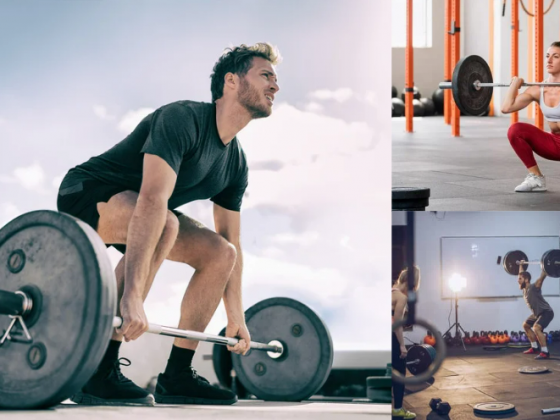Understanding the Foundation
Push-ups represent a foundational, no-frills exercise ingrained in fitness culture. Their simplicity belies their efficacy in engaging multiple muscle groups and fostering overall strength.
The Ubiquitous Push-Up
From military training to home workouts, the push-up is a universal exercise. Its prevalence underscores its fundamental role in building strength and endurance.
Embark on a journey dissecting the fascinating dynamics of the push-up, a fundamental yet powerful exercise. Unravel the intricate connection between the push-up and muscular engagement.
Mechanics of a Push-Up
Fundamental Movement
The push-up’s mechanics involve a controlled descent, engaging muscles across the upper body and core, followed by a powerful push back to the starting position.
Proper Form and Technique
Maintaining proper form is vital for maximizing muscle activation and preventing injuries. A straight body, controlled movements, and elbow positioning are key elements.
Variations and Adaptations
Variations, such as wide grip, narrow grip, or incline push-ups, offer unique challenges, targeting specific muscle groups and accommodating various fitness levels.
The push-up, a quintessential compound exercise, engages a myriad of muscles through its basic motion. Understanding form and technique is pivotal for optimal muscle activation and injury prevention. Discover diverse variations for tailored workouts.
Primary Muscles Engaged
Chest Muscles (Pectorals)
Push-ups primarily activate the pectoral muscles, responsible for the horizontal adduction of the arms. They’re crucial for the pushing motion involved in the exercise.
Triceps
The triceps, located at the back of the arms, work dynamically to extend the elbows during the upward phase of the push-up.
Deltoids
Shoulder muscles, or deltoids, play a key role in stabilizing and controlling the downward and upward phases of the push-up.
Delve into the primary muscle groups activated during push-ups, uncovering the distinct roles played by the chest, triceps, and deltoids in executing this exercise.
Secondary Muscles Involved
Core Muscles
Engagement of core muscles is crucial for maintaining a stable body position throughout the push-up motion.
Back Muscles
The push-up engages the back muscles to stabilize the shoulder blades and maintain proper posture.
Stabilizing Muscles
Various small muscle groups, like the serratus anterior and rotator cuff muscles, act as stabilizers during the exercise.
Beyond the primary movers, the push-up recruits an ensemble of secondary muscles, crucial for stability and overall body control. Learn how the core, back, and stabilizing muscles contribute to the execution of this exercise.
Muscle Activation Patterns
Isometric Contraction
At the lowest point of the push-up, isometric contraction occurs, engaging muscles statically without changing their length.
Concentric and Eccentric Phases
The upward push represents the concentric phase, shortening the muscles, while the downward descent constitutes the eccentric phase, lengthening the muscles.
Explore the nuances of muscle activation during different phases of the push-up, from the isometric hold to concentric and eccentric movements, unlocking the secrets behind muscle engagement and development.
Benefits Beyond Muscle Building
Cardiovascular Endurance
The repetitive nature of push-ups contributes to improved cardiovascular endurance, enhancing heart and lung health.
Full-Body Engagement
Push-ups engage multiple muscle groups simultaneously, promoting full-body strength and coordination.
Uncover the broader advantages of push-ups, extending beyond muscle strengthening. Delve into the enhancement of cardiovascular endurance and the holistic engagement of the body.
Push-Up Challenges
Overcoming Plateaus
Plateaus are common in push-up progress. Strategies such as altering variations or introducing resistance can help break through plateaus.
Advanced Techniques
From plyometric push-ups to one-arm variations, advanced techniques challenge the muscles differently and foster continuous growth.
Encounter the hurdles in mastering push-ups and explore strategies to overcome plateaus. Discover advanced techniques to intensify and diversify your push-up routine, pushing your limits further.
Common Mistakes and Corrections
Improper Form
Sagging hips, flared elbows, or improper hand positioning can hinder the effectiveness of push-ups. Corrections involve body alignment and conscious muscle engagement.
Overtraining Pitfalls
Excessive push-ups without adequate rest can lead to overuse injuries. Balancing workout intensity with recovery is crucial.
Identify prevalent mistakes in push-up execution and learn corrective measures to refine your form. Avoid the pitfalls of overtraining by understanding the importance of rest and recovery.
Push-Up for Different Fitness Levels
Beginners
Modified versions like knee push-ups gradually build strength for beginners.
Intermediate
Standard push-ups challenge intermediates, encouraging muscle growth and endurance.
Advanced Athletes
Advanced variations like handstand push-ups or weighted push-ups cater to the high strength and skill levels of advanced athletes.
Tailor your push-up routine according to your fitness level. Explore progressive approaches for beginners, challenging variations for intermediates, and advanced techniques for seasoned athletes.
Push-Up and Muscle Development
Hypertrophy vs. Endurance
Varied rep ranges and intensity determine whether push-ups contribute to muscle size (hypertrophy) or endurance.
Training Programs
Structured programs balancing push-ups with other exercises optimize muscle development and strength.
Understand the correlation between push-ups and muscle development, distinguishing between hypertrophy and endurance training. Explore specialized training programs for different muscle development goals.
Nutrition and Muscle Recovery
Protein Intake
Adequate protein intake aids in muscle repair and growth post-push-up workouts.
Rest and Recovery
Ample rest is essential to allow muscles to recuperate and grow stronger.
Unravel the crucial role of nutrition in supporting muscle recovery post-push-up workouts. Delve into the significance of protein intake and the necessity of adequate rest for muscle repair and growth.
Incorporating Push-Ups into a Routine
Frequency and Volume
Balancing frequency and volume to avoid overtraining while promoting progress is key.
Complementary Exercises
Exercises like pull-ups or squats complement push-ups, ensuring a balanced and comprehensive workout routine.
Learn the ideal frequency and volume of push-ups within a workout routine. Discover complementary exercises that synergize with push-ups for a balanced and comprehensive training regimen.
Psychological Benefits of Push-Ups
Discipline and Mental Resilience
Consistent commitment to push-ups cultivates discipline and mental fortitude.
Confidence and Self-Efficacy
Improvement in push-up performance fosters self-confidence and a sense of achievement.
Explore the psychological impact of integrating push-ups into your routine, unveiling the development of discipline, mental resilience, and enhanced self-confidence.
Push-Up Equipment and Accessories
Push-Up Bars
Bars elevate the hands, altering hand position and intensifying the exercise.
Resistance Bands
Integrating bands modifies resistance, challenging different parts of the push-up motion.
Discover how equipment and accessories like push-up bars and resistance bands can augment your push-up routine, enhancing the challenge and targeting specific muscle groups.
Safety Measures and Precautions
Warming Up
Dynamic warm-ups prepare muscles and joints for push-up movements, reducing the risk of injury.
Listening to Body Signals
Paying attention to pain or discomfort signals during push-ups is vital to prevent overuse injuries.
Prioritize safety by understanding the significance of warm-ups and heeding your body’s signals to prevent injuries during push-up sessions.
Push-Up Variations for Specific Goals
Weight Loss
Incorporating high-intensity variations can aid in burning calories for weight loss.
Strength Building
Weighted or plyometric variations focus on strength and muscle building.
Mobility and Flexibility
Incorporating dynamic variations improves joint mobility and flexibility.
Tailor your push-up variations according to specific fitness goals, whether it’s weight loss, strength building, or improving mobility and flexibility.
Push-Ups: Age and Gender Differences
Aging and Adaptations
As individuals age, adaptations in form and intensity might be necessary for comfortable execution.
Gender Disparities
Physical differences might affect the execution and effectiveness of push-ups between genders.
Uncover the impact of age and gender on push-up performance and adaptations, recognizing how different demographics may approach and benefit from this exercise.
Push-Up Myths Debunked
Spot Reduction
Dispelling the myth that push-ups alone can target fat loss in specific areas.
Only for Upper Body
Reiterating the full-body engagement of push-ups, contrary to the misconception of being solely for the upper body.
Challenge and dispel common myths associated with push-ups, addressing misconceptions like spot reduction and the belief that they solely target the upper body.
Cultural and Historical Significance
Origin and Evolution
Tracing the roots of push-ups from ancient exercises to modern fitness routines.
Popularity Across Cultures
Acknowledging the widespread inclusion of push-ups in various cultural and historical contexts.
Trace the roots and evolution of push-ups, exploring their significance across cultures and their prevalence in various historical contexts.
Innovations in Push-Up Training
Technology Integration
How technology has revolutionized push-up tracking and training techniques.
Hybrid Workouts
Emergence of hybrid routines combining push-ups with other disciplines for diverse fitness goals.
Discover modern advancements and innovations in push-up training, from technology integration to the emergence of hybrid workout routines incorporating push-ups.
Conclusion
Recap of Muscle Engagement
Summarizing the intricate network of muscles engaged during push-ups, emphasizing their significance in a holistic workout regimen.
Encouragement to Push Your Limits
Urging readers to explore and challenge their boundaries, leveraging the diverse insights and knowledge gained throughout the article.
This comprehensive exploration unveils the intricacies of push-ups, their impact on muscle engagement, training strategies, psychological benefits, and debunking myths. Whether you’re a beginner or an advanced athlete, the push-up remains a cornerstone of fitness, inviting all to push their limits and elevate their strength and endurance.



